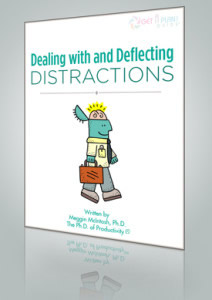Moving Away from the “Culture of Now” by Dave Crenshaw
 A “Culture of Now” says that everything needs to be done right now, i.e., it needs to have an immediate response. The “Culture of Now” is terribly unproductive.
A “Culture of Now” says that everything needs to be done right now, i.e., it needs to have an immediate response. The “Culture of Now” is terribly unproductive.
People need to move to a “Culture of When” that says, “this is when I’m going to accomplish things.” The Culture of When helps you take control of your schedule, rather than allowing you to be pushed around by the whims of others or the beeps and buzzes of technology.
Here are the top 10 tips to move from a “Culture of Now” to a “Culture of When.”
-
No appointments without a calendar. Don’t ever commit yourself to an appointment with someone else (or with yourself) without scheduling it into your calendar.
- When delegating a task, give a clear expectation of due date. When you delegate a responsibility to someone else, make sure that you are clear with him/her when you expect the result.
-
Establish a voicemail expectation. That means that when someone calls you, they should hear a message that lets them know when they should expect to receive a reply back from you.
- Tell others when you expect to get them a result. If others ask you for something, let them know, “I expect to get back to you within an hour (or two hours or five days).”
-
Ask others when they expect you to reply to them. If someone delegates something to you, clarify with that person when a responses is expected.
- Schedule recurring appointments with yourself on repetitive tasks and projects. If you have a repetitive task that you perform, such as paying bills, then schedule a recurring appointment with yourself in your calendar to take care of that.
-
Establish a schedule to check email. Make sure that you are not constantly checking email or that you are dependent upon email to let you know when it has arrived. Instead, establish a schedule for yourself within your calendar to check email.
- Establish shop hours for your office. In the same way that retail businesses have hours that they are open for business, you need to have a clearly established set of shop hours for yourself. Let other know when it is appropriate to interrupt you and come into your office.
-
Setup 1:1 Huddles. I talk about these huddles in my book, The Myth of Multitasking. This is a one-on-one meeting that you have regularly with other people to ask them what they need from you and to tell them what you need from them. This eliminates a lot of the quick questions that happen in your day.
- Set a time boundary for yourself. Most people allow their day to just spill over into however long it takes. By establishing a set boundary (meaning, I’m going to stop my day at five o’clock or six o’clock) you take control of your schedule and you force yourself to be wise in the decisions you make with your timeline.
If you implement these changes you will bring a much greater sense of control and sanity to your workday, and you will be much, much more productive.
© Dave Crenshaw has appeared in Time magazine, Forbes, the Washington Post, and the BBC News. His first book, The Myth of Multitasking: How ‘Doing It All’ Gets Nothing Done, has been published in six languages and is a time management best seller. He has also written Invaluable: The Secret to Becoming Irreplaceable, and The Focused Business: How Entrepreneurs Can Triumph Over Chaos (another small business best seller), which are also available in all major bookstores. As an author, speaker, and business coach, Dave has transformed thousands of businesses worldwide. DaveCrenshaw.com. Email. Twitter. Candid Productivity video series.
 If you liked these writing tips, you may be interested in the Get a Plan! Guide® for Dealing with and Deflecting Distractions. It’s specially designed so you can accomplish your goals more smoothly (i.e., peacefully, productively, and predictably). You’ll learn ways to take stock of your distractions, along with 6 means to eliminate – or at the very least, minimize – those distractions. I promise that you will have a plan that you can implement starting today.
If you liked these writing tips, you may be interested in the Get a Plan! Guide® for Dealing with and Deflecting Distractions. It’s specially designed so you can accomplish your goals more smoothly (i.e., peacefully, productively, and predictably). You’ll learn ways to take stock of your distractions, along with 6 means to eliminate – or at the very least, minimize – those distractions. I promise that you will have a plan that you can implement starting today.



